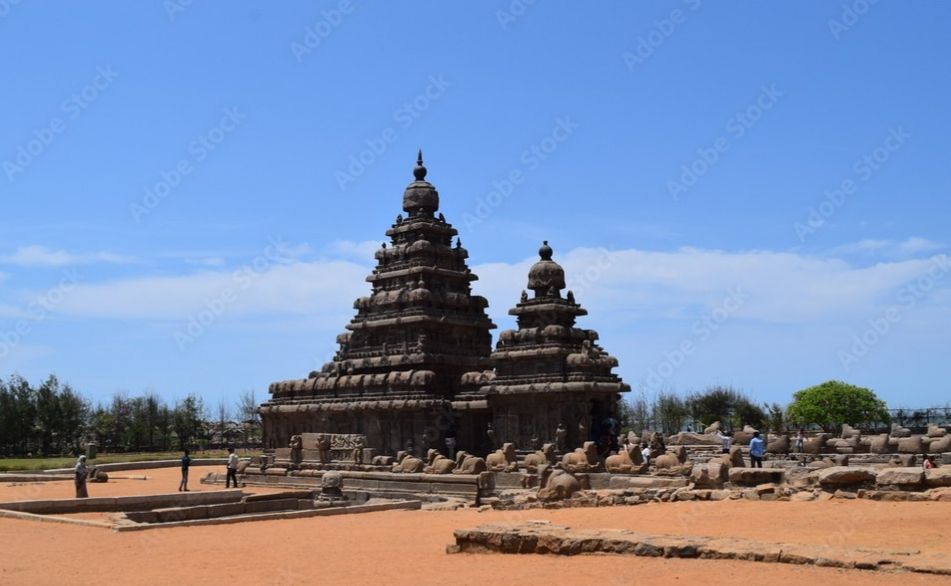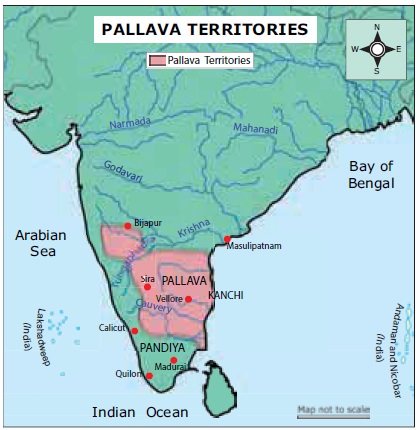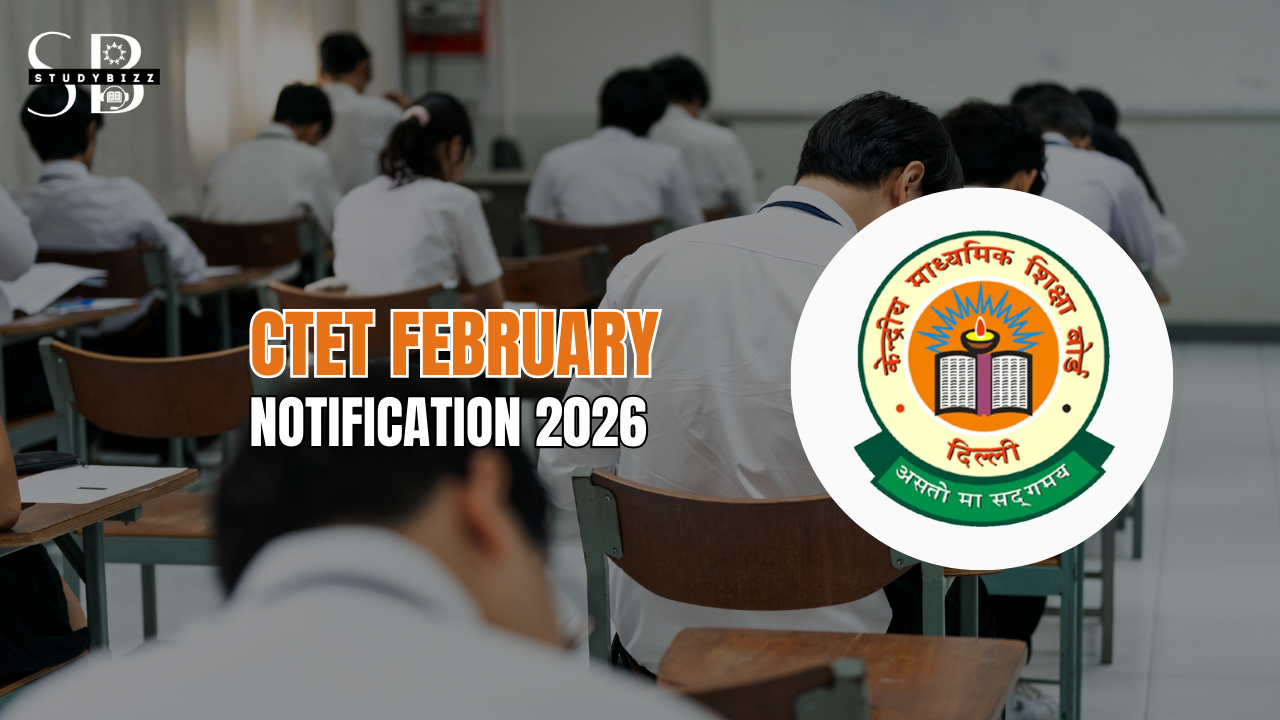The Pallava dynasty was a royal dynasty in southern India that ruled from the 3rd to the 9th centuries AD. The Pallavas were known for their patronage of architecture and the arts, and their capital was at Kanchipuram. They also played an important role in the spread of Buddhism in the region. The dynasty was founded by Simhavishnu, and some of the most notable Pallava kings include Mahendravarman I, Narasimhavarman I, and Rajasimha. The Pallavas were eventually conquered by the Chola dynasty.
Origin and Timeline :
There are various theories pertaining to the origin of Pallavas.The available historical materials include three copper-plate grants of Sivaskandavarma in the first quarter of the 4th century CE, all issued from Kanchipuram but found in various parts of Andhra Pradesh, and another inscription of Simhavarma, who rose to power around 275-280 AD, is the earliest recorded Pallava king.
His only known inscription was found at Macikkallu, Guntur district in Andhra Pradesh, and was written in Prakrit.
The inscription has been dated to 320 AD and directed to provide amenities to the custodians of the temple of lord Jivasivaswami which probably refers to Lord Shiva.He established Pallava rule in Coastal Andhra.
All the early documents are in Prakrit, and scholars find similarities in paleography and language with the Satavahanas and the Mauryas. Their early coins are said to be similar to those of Satavahanas. Two main theories regarding the origins of the Pallavas have emerged based on available historical data. The first theory suggests that the Pallavas were initially subordinate to the Satavahanas, a ruling dynasty in the Andhradesa region (north of the Penna River in modern-day Andhra Pradesh). According to this theory, the Pallavas later expanded their influence southward, eventually establishing their power in Kanchi (modern-day Kanchipuram). The second theory proposes that the Pallavas originated in Kanchi itself, where they initially rose to prominence. From there, they expanded their dominion northward, reaching as far as the Krishna River. The most believed theory could be the first one where it looks they had expanded their kingdom post the decline of satavahanas and further post the decline of Andhra Ikshvakus.
During the reign of Mahendravarman I in the 6th century AD, the Pallavas began to expand their territories and came into conflict with the neighboring Chalukya dynasty. The Pallavas were initially successful in these wars, but ultimately the Chalukyas were able to defeat the Pallavas and bring an end to their expansion.
In the 7th century AD, the Pallavas reached the peak of their power under Narasimhavarman II, who is also known as Rajasimha. He was a great patron of the arts and built many temples and other architectural monuments.
However, the decline of the Pallava dynasty began in the 8th century AD. They were eventually conquered by the Chola dynasty in the 9th century AD, which marked the end of the Pallava dynasty’s rule in South India.
The Pallava dynasty’s legacy is evident in the many temples and architectural monuments that they built, which continue to be important historical sites in southern India and draw many tourists.
Hierarchy :
The Pallava dynasty had a hierarchical system of governance, with the king at the top of the hierarchy. The king had absolute power and was responsible for making laws, collecting taxes, and leading the army in times of war. The king was also the chief justice, and had the power to appoint and dismiss officials.
Below the king were the nobility, which consisted of various classes of officials and officers. The highest officials were the Mahamandaleshvara, who held the highest ranks and were responsible for overseeing the administration of the kingdom. They were appointed by the king and had the power to govern the provinces and districts of the kingdom.
Next in the hierarchy were the district administrators, who were responsible for maintaining law and order, collecting taxes, and maintaining peace in the districts. They were appointed by the king and were answerable to the Mahamandaleshvara.
Below them were the village officials, who were responsible for maintaining law and order, collecting taxes, and maintaining peace in the villages. They were appointed by the district administrators and were answerable to them.
The lowest level of the hierarchy was the common people. They had very little power and were mostly engaged in agriculture, trade, and other occupations. They had to pay taxes to the king and the officials, and had to provide labor and other services when required.
It’s important to note that this is a general overview of the Pallava dynasty’s hierarchy and it could have varied over time and between different regions. Additionally, the hierarchy was not rigid and there were often political struggles for power among the officials and officers.
Administration :
The administration of the Pallava dynasty was centralized and closely controlled by the king. The king was the ultimate authority and had the power to make laws, collect taxes, and lead the army in times of war. He was also the chief justice and had the power to appoint and dismiss officials.
The kingdom was divided into provinces called Mandalams and districts, each of which was governed by prince or an appointed official known as a Mahamandaleshvara. These officials were responsible for maintaining law and order, collecting taxes, and ensuring the welfare of the people in their provinces and districts. They were appointed by the king and were answerable to him.
The provinces or Mandalams were further divided into Kottam which were further divided into smaller administrative units called nadus, which were governed by officials known as naattar(nadugars). These officials were responsible for maintaining law and order, collecting taxes, and ensuring the welfare of the people in their nadus. They were mostly appointed by the Mahamandaleshvara and were answerable to him.
Provinces -> Mandalam -> Kottam -> Nadu -> Ur(Village)
Mandalam’s were mostly allotted for princes , followed by Kottam which are administered by the officials directly appointed by the king. The next segment is Nadu administered by a council called Naattar. Nadu’s were further divided into Ur which are the smallest units or also called villages administered by the village committees called sabhas.
The administration of justice was also an important aspect of the Pallava dynasty’s administration. The king was the chief justice and had the power to appoint judges and officials to preside over legal cases. The kingdom had a complex legal system that was based on the principles of the Dharmashastra and Arthashastra texts.
Taxation was an important source of revenue for the Pallava dynasty. They had a system of land taxation, where taxes were collected from the farmers based on the size of their landholding. They also had a system of trade taxation, where taxes were collected from merchants and traders based on their income.
In addition to these, the Pallavas had a well-organized army, which was led by the king himself. They had a standing army and a system of conscription, where able-bodied men were required to serve in the army. They also had a navy which was responsible for protecting the coast and the trade routes.
Overall, the Pallava dynasty’s administration was efficient and well-organized. It helped them to maintain control over their territories and provide stability to the kingdom.
Military Administration :
The Pallava dynasty had a well-organized military administration, which played an important role in maintaining their control over their territories and expanding their empire. The king was the commander-in-chief of the army and had the power to appoint and dismiss military officials.
The army was divided into different units, such as infantry, cavalry, and elephants. The king himself led the army in times of war and was supported by a council of military officials. The council was responsible for planning and executing military campaigns, as well as maintaining the army’s logistics and supplies.
The Pallavas had a standing army, which was composed of regular soldiers and officers. They also had a system of conscription, where able-bodied men were required to serve in the army. The soldiers were well-trained and equipped, and were known for their skill and discipline.
In addition to land warfare, the Pallavas also had a navy, which played an important role in protecting the coast and the trade routes. The navy was led by a naval commander, who was appointed by the king. They had well-equipped ships and were known for their naval tactics and expertise.
The Pallavas also had a system of fortifications and garrisons to protect their kingdom. They built many forts and fortresses to protect key strategic locations and trade routes. The forts were manned by soldiers and officers, and were equipped with weapons and supplies.
The Pallava dynasty’s military administration was efficient and well-organized. It helped them to maintain control over their territories and defend their kingdom against invasions. The military campaigns of the Pallavas were well-planned and executed, and they were known for their skill and discipline on the battlefield.
Judiciary Administration :
The judiciary administration of the Pallava dynasty was closely tied to the king, who was the chief justice and had the power to appoint and dismiss judges and officials. The kingdom had a complex legal system that was based on the principles of the Dharmashastra and Arthashastra texts, which were the ancient Indian texts on law and governance.
The king had the power to appoint judges and officials to preside over legal cases. These judges and officials were known as “adhyakshas” and were responsible for administering justice in the kingdom. They had the power to hear legal cases, interpret laws, and impose punishments.
The legal system of the Pallavas was divided into civil and criminal courts. Civil courts dealt with disputes related to property, trade, and other private matters. Criminal courts dealt with crimes such as theft, murder, and other criminal offenses.
The Pallavas also had a system of appeals, where individuals could appeal the decisions of lower courts to higher courts. The final court of appeal was the king’s court, where the king himself heard and decided the cases.
The Pallavas also had a system of fines, imprisonment, and capital punishment as penalties for crimes. The punishment was determined by the severity of the crime and the circumstances of the case.
The judiciary administration of the Pallava dynasty was efficient and well-organized. It helped to maintain law and order in the kingdom and provide justice to the people. The legal system was based on the principles of fairness, impartiality and the protection of the rights of the citizens, but as with any other historical period, the access to justice and fairness could have varied depending on the social and economic status of the person.
Economy :
The economy of the Pallava dynasty was primarily based on agriculture, trade, and manufacturing. Agriculture was the main occupation of the people, and the kingdom had a well-developed system of irrigation and land cultivation. The main crops grown were rice, millets, sugarcane, and various kinds of pulse and vegetables.
Trade also played an important role in the economy of the Pallavas. They had well-developed trade networks and were known for their maritime trade with Southeast Asia, China, and the Mediterranean region. They traded in various goods such as textiles, spices, pearls, and precious stones. They also had a developed ports and shipbuilding industry.
Manufacturing was also an important part of the Pallava economy. They had a well-developed system of craftsmanship and were known for their textiles, metalwork, and other crafts. They also had a developed system of coinage, which helped to facilitate trade and commerce.
The Pallavas also had a system of taxes and tribute, which was a significant source of revenue for the kingdom. Land and trade taxes were the main sources of revenue. The taxes were collected by the officials and were used to support the administration, the army, and public works.
The Pallava dynasty’s economy was diverse and well-developed. The agriculture and trade helped to provide food and wealth to the kingdom, while the manufacturing and craftsmanship helped to create jobs and wealth. The well-organized system of taxation and tribute helped to support the administration and the kingdom’s public works. In addition, the Pallavas also had a well-organized system of irrigation, land cultivation, and land management which helped to increase the agricultural production and sustain the kingdom’s population.
Taxation on Agriculture :
In the Pallava dynasty, agriculture was the main source of revenue and taxes were collected from farmers based on the size of their landholding. The system of taxation on agriculture was known as the “Bhaga” system. Under this system, the land was divided into two parts: the “Devabhaga” and the “Rajabhaga”.
The Devabhaga was the portion of the land that was dedicated to the gods and was not subject to taxes. The Rajabhaga, on the other hand, was the portion of the land that was subject to taxes. The taxes were collected on the basis of the size of the landholding and the type of crop grown.
The taxes were collected by officials who were appointed by the king. These officials were known as “Karnam” and were responsible for assessing the taxes and collecting them from the farmers. The taxes collected were used to support the administration, the army, and public works.
The taxes collected from the farmers were often high, which could cause problems for the farmers. In some cases, the high taxes and the burden of labor services could lead to farmer’s indebtedness and landlessness. Additionally, the taxes could be imposed differently depending on the region, the resources and the economic and social conditions of the farmers.
However, the Pallavas also had a system of land management which helped to increase the agricultural production. They had a well-organized system of irrigation and land cultivation, which helped to improve the yield of crops and sustain the kingdom’s population.
Overall, the taxation system on agriculture in the Pallava dynasty was an important source of revenue for the kingdom, but it could also have a negative impact on the farmers. The Pallava kings and their officials had to balance the needs of the kingdom with the needs of the farmers, and thus the taxes and the burden of labor services could have varied over time and between different regions.
Culture :
The culture of the Pallava dynasty was heavily influenced by the existing Dravidian and Aryan cultures of South India. The Pallavas were known for their patronage of the arts and architecture, which helped to develop a rich cultural heritage in the region.
Art and Architecture: The Pallavas were known for their architectural achievements, which included the building of rock-cut cave temples and structural temples. The most notable of these is the Shore Temple at Mahabalipuram, which was built during the reign of Narasimhavarman II in the 7th century AD. This temple is an UNESCO World Heritage site and is considered one of the best examples of Dravidian architecture.
Another notable architectural achievement of the Pallavas was the building of the Kailasanathar Temple in Kanchipuram, which is considered one of the finest examples of Pallava architecture. The Pallavas also built many other temples, monasteries and rock-cut cave shrines which are found in various parts of South India.
Literature: Pallavas supported languages like Sanskrit, Telugu, Prakrit, and Tamil. Kanchi was an important centre for Sanskrit learning.
Sanskrit: Mattavilasa Prahasana and Bagavatha Ajikkiyam were notable works written by the ruler Mahendravarman I himself.
Dandin, who wrote Kavyadharsha lived in the courts of one of the Pallava rulers Narasimhavarman II.
Another Sanskrit scholar, Bharavi, used to visit Kanchipuram during Pallava rule.
Tamil: Nayanmars and Alwars wrote their hymns in Tamil, thus encouraging and flourishing Tamil literature. Devotional songs in Tamil were important pieces of religious literature in this period.
Perundevanar, a Tamil scholar, wrote Bharathavenba. Kalladanar wrote a grammar book called Kalladam.
An unknown author wrote Nandikalambakam, a book describing Nandivarman III’s reign.
Devaram, composed by Nayanmars and the Nalayradivyaprabandam by Alwars, represented religious literature.
Telugu: Though telugu literary sources found around the same period, similar to satavahanas early pallavas who began their rule in coastal andhra used prakrit as the official language. Prakrit during and post satavahanas was a blend of desi language having traces of early telugu.
Religion: The Pallavas were primarily Hindu, but they were also known for their tolerance of other religions. They patronized Buddhism and Jainism, and built many temples and monasteries for these religions. They also embraced the Shaivism and Vaishnavism sects of Hinduism.
In terms of rituals and beliefs, the Pallavas followed the traditional rituals and beliefs of the Dravidian and Aryan cultures. The Pallavas also had their own unique customs and beliefs which were influenced by their own experiences and culture.
Overall, the culture of the Pallava dynasty was rich and diverse. Their patronage of the arts and architecture helped to develop a unique cultural heritage in South India. The Pallavas also contributed to the development of literature and religion in the region, and their culture was influenced by the existing Dravidian and Aryan cultures of South India.
Art & Architecture :
The art and architecture of the Pallava dynasty were some of the most significant contributions of the dynasty and are considered some of the best examples of Dravidian architecture. The Pallavas were known for their patronage of the arts and architecture, which helped to develop a rich cultural heritage in the region.
Rock-cut Cave Temples: The Pallavas were known for their rock-cut cave temples, which were carved out of solid rock. These temples were used for religious and ceremonial purposes, and were often decorated with sculptures and carvings. Some of the most notable examples of Pallava rock-cut cave temples include the Mahishasuramardini cave temple and the Varaha cave temple in Mahabalipuram, and the Kailasanathar cave temple in Kanchipuram.

Structural Temples: In addition to rock-cut cave temples, the Pallavas also built many structural temples. These temples were built using brick and stone and were often decorated with sculptures and carvings. The most notable example of a Pallava structural temple is the Shore Temple at Mahabalipuram, which was built during the reign of Narasimhavarman II in the 7th century AD. This temple is an UNESCO World Heritage site and is considered one of the best examples of Dravidian architecture.
Sculptures and Carvings: The Pallavas were also known for their sculptures and carvings. These sculptures and carvings were often used to decorate the temples and other architectural structures. Some of the most notable examples of Pallava sculptures and carvings include the sculptures of the Mahishasuramardini and the Varaha in Mahabalipuram and the sculptures of the Kailasanathar temple in Kanchipuram.
The Pallava art and architecture were characterized by their attention to detail and the use of intricate designs and motifs. The Pallavas also developed a unique style which was a fusion of the existing Dravidian and Aryan styles. They also had a great influence on the later south Indian architecture, in the Chola, Vijayanagara and later dynasties.
Overall, the art and architecture of the Pallava dynasty were some of the most significant contributions of the dynasty and continue to be important historical sites in southern India. They also played an important role in the development of a unique cultural heritage in the region and are considered some of the best examples of Dravidian architecture.
Fall of the Pallava Dynasty :
The Pallava dynasty fell in the 9th century AD, following a period of decline and internal conflict. The exact causes of the fall of the dynasty are not well-documented, but several factors contributed to the decline of the dynasty.
Internal Conflicts: The Pallava dynasty faced internal conflicts and struggles for power among the ruling family and nobles. This weakened the dynasty and made it vulnerable to outside invasions.
Invasion by the Cholas: The rise of the Chola dynasty, which was a powerful kingdom in South India, was a major factor in the fall of the Pallava dynasty. The Cholas, under their king Rajaraja Chola I, launched several invasions against the Pallavas, and eventually conquered their territories in the 9th century AD.
Decline in Trade and Economy: The decline in trade and economy also played a role in the fall of the Pallava dynasty. The kingdom’s trade routes were disrupted and the economy suffered due to the invasions by the Cholas and the internal conflicts. This made it difficult for the Pallavas to maintain their power and control over their territories.
Lack of Strong Leadership: The Pallava dynasty also faced a lack of strong leadership in its later years, as the kings were unable to maintain control and provide stability to the kingdom. This further contributed to the decline of the dynasty.
The fall of the Pallava dynasty marked the end of an era in South Indian history and opened the way for the rise of new dynasties such as the Cholas, Pandyas and later the Eastern Chalukyas, and the Western Chalukyas, among others. Their art, architecture, and literature, however, continue to be an important part of South Indian culture and history.





Leave a Reply